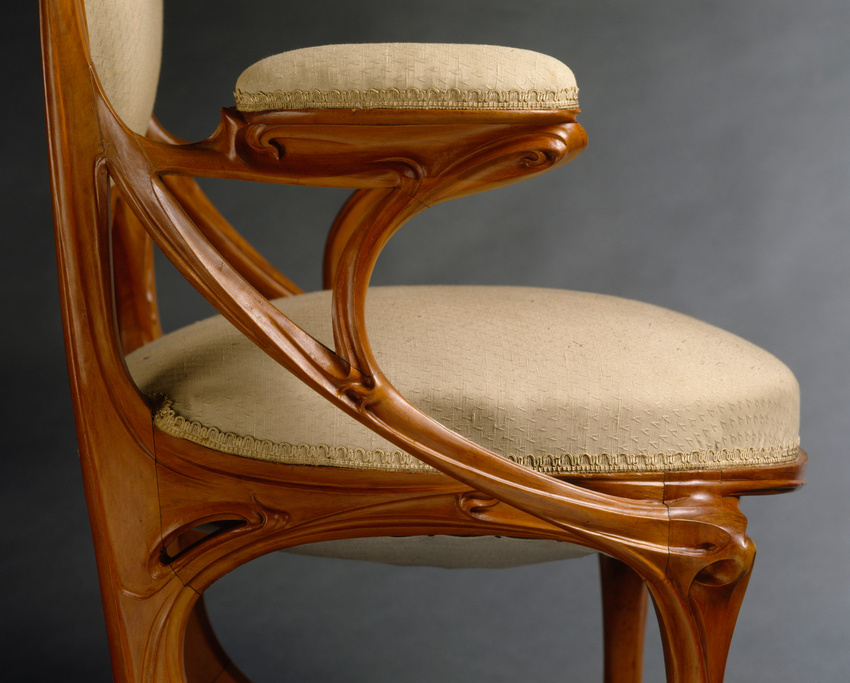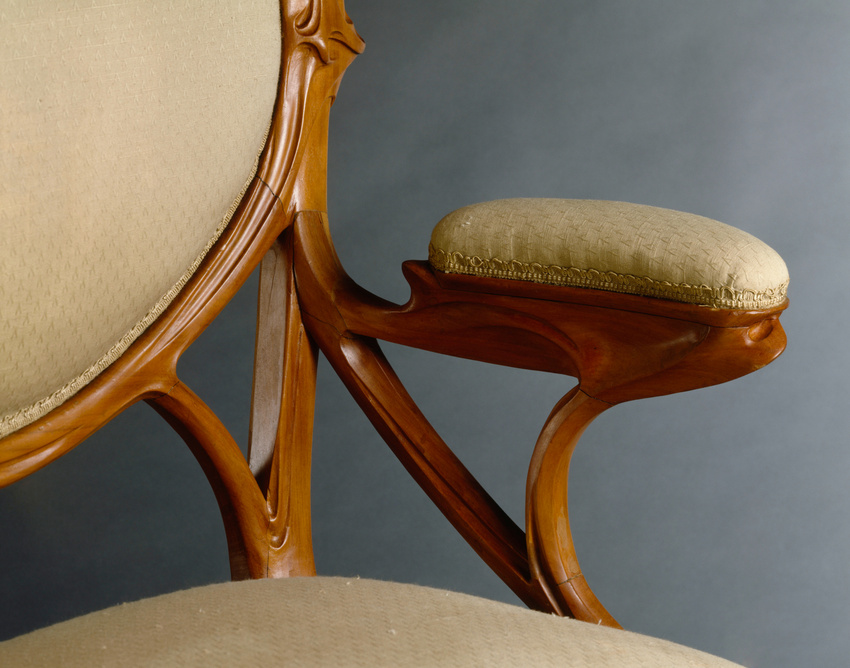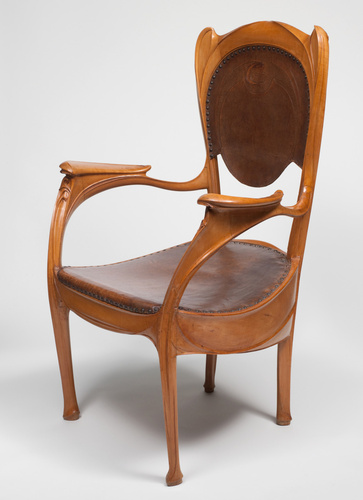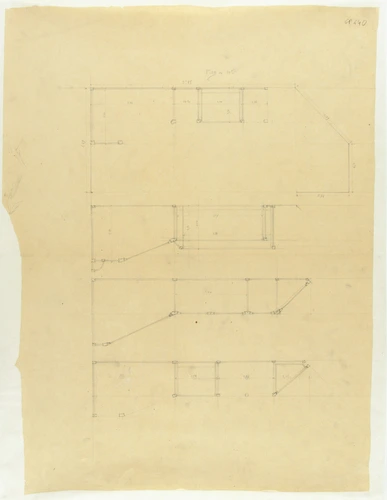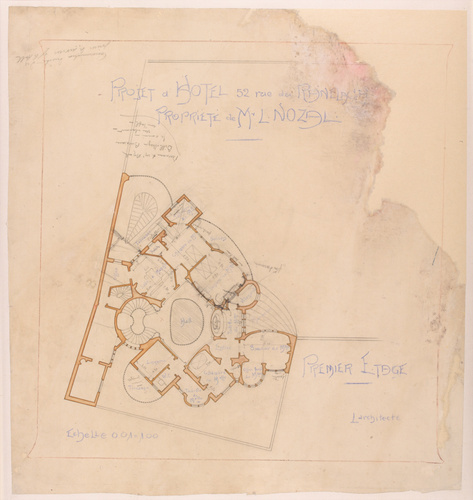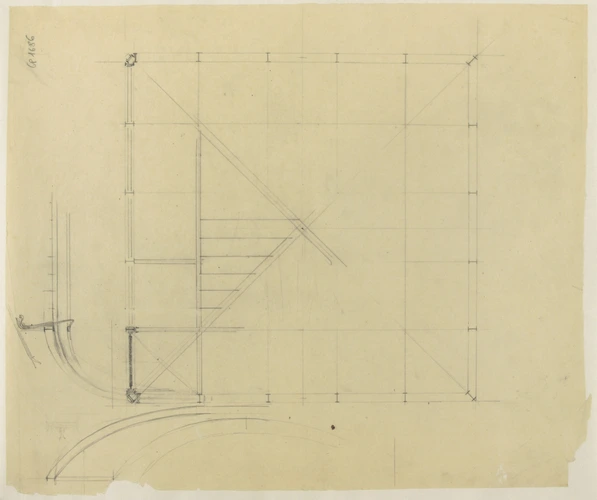Fauteuil
In 1894, Guimard, still young and virtually unknown, found himself entrusted with the creation of the Castel Béranger, an apartment building situated in the 16th arrondissement in Paris. The building was only just completed when, in 1898-1899, the architect received several commissions which then led him to design complete suites of furniture. Given his workload, he could not create a completely original design for each one. Therefore, we see that the chairs from the Coilliot house in Lille, where this armchair comes from, those from the Hôtel Roy in Paris or from the Castel Henriette in Sèvres, all have similar legs. The most striking characteristic here is the use of a diagonal crosspiece in a simple, supple design to link the front and rear legs.
Here, an oval medallion, emanating a faint echo of the Louis XVI style, forms the back of the chair. A diagonal crosspiece, parallel with that between the legs, links the upright of the back to the top of the front leg. A support for the armrest is grafted on to this.
If one compares the armchair with the chairs designed in the same style, the construction seems less satisfactory, too demonstrative. It lacks the incomparable and thoroughly Parisian elegance that distinguishes Guimard's early 20th century creations. The slightly clumsy outline of Coilliot's armchair is due, perhaps, to the fact that it is probably one of the first armchairs designed by the architect. Guimard has retained a chair structure and merely added armrests. The piece is still, however, totally representative of the way in which, from his very first attempts, he combined Naturalism and abstraction.

